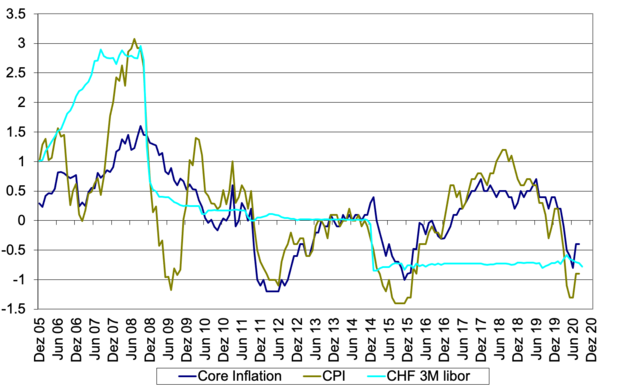Market:
The indirect property market is tending towards a certain overreaction to the fundamental indicators described above in the near to medium term. This has the potential to fuel excessive optimism or pessimism depending on the type of property, sector or sometimes even the individual stock. Considering this, the
trends identified in the various different segments with respect to the current situation are not surprising. As a result, the initial phase of the growth in the market was concentrated almost exclusively in the non-commercial sector and investment vehicles ranging in size from medium to large.
Since the middle of the summer, however, new trends have emerged that are leading to more varied performances in the individual sectors.
There are two factors behind this. Firstly, the publication of companies’ semi-annual results on 30 June 2020 confirmed that the impact of the COVID-19 pandemic on most commercial property portfolios has been less severe than initially feared. Secondly, Switzerland is still performing well, with a comparatively
modest decline in GDP (gross domestic product) and a more rapid return to economic growth than has been observed in other countries.
This should not give grounds for unwarranted optimism, however, because the global pandemicwill also have a major impact on the fourth quarter.
Individual sectors of the economy will continue to be hit hard and the negative effects will persist into 2021. This should all result in a certain degree of convergence between the valuation of the various different property investments.
In this context, the third quarter was a positive one for indirect property investments. After rising 4.0 % in the third quarter, the SWIIT real estate index increased by 2.3 % in comparison to the start of the year. Capital increases on the capital market with a volume of 500 million led to high volatility in listed real estate funds. Real estate companies took longer to return to a positive trend. Some of them even reported their lowest values for the year in August. Nevertheless, the REAL real estate equity index ended the quarter up 1.25 %, which improved the annual performance to –10.8 %.
Outlook:
At the end of September 2020, investment funds were still 7 % below the historical highs seen at the start of the year, but with substantial differences depending on the product. Some products have more than made up for the initial downturn due to fears relating to the impact of COVID-19 and have even achieved new alltime highs in recent weeks.
The residential sector, for example, is currently trading at an average premium of 34.2 %, with a dividend yield of around 2.2 %. The commercial sector, on the other hand, is trading at an average premium of 10.8 %, with a dividend yield of around 3.7 %.
The differential between the premiums of these two sectors has more than doubled to 23 percentage points, reflecting the very different expectations for both sectors in the years ahead.
The recovery of economic growth is likely to reduce this differential. Lost cash flows in connection with the lockdown are only expected to have a limited impact on most commercial products. With just a few exceptions, dividends are expected to be maintained, and this could draw investors back.
We will remain highly selective within the various sectors because the effects of the pandemic will impact all market players in the medium term and not be limited to the retail sector.
The current valuation goes slightly above fair value in relation to the interest rate. As capital increase activities are not expected to decline between now and the end of the year, we do not expect any further, substantial rise in the real estate fund index. Significant sector rotation in a slightly more volatile environment is therefore expected in the fourth quarter.
In the third quarter, real estate companies trailed the stock market by a substantial, cumulative shortfall of almost 15 %. The publication of companies’ semi-annual results and, in some cases, the positive revision of projected earnings for the year in progress helped restore some momentum to the sector. If economic growth returns gradually, this trend should continue in the months ahead.
Core inflation, LIK and CHF 3M Libor
Nicolas Di Maggio, Head Indirect Investments
Johannes Schwab, Portfolio Manager
Ruedi Göldi, Portfolio Manager
The transaction market for direct property investment has undergone a surprisingly dynamic recovery in recent months, boosted by a sustained period of low interest rates. What is less surprising is that the compression of initial yields was strongest in the residential sector, followed by the office sector (prime), while the retail sector stagnated year-on-year.

